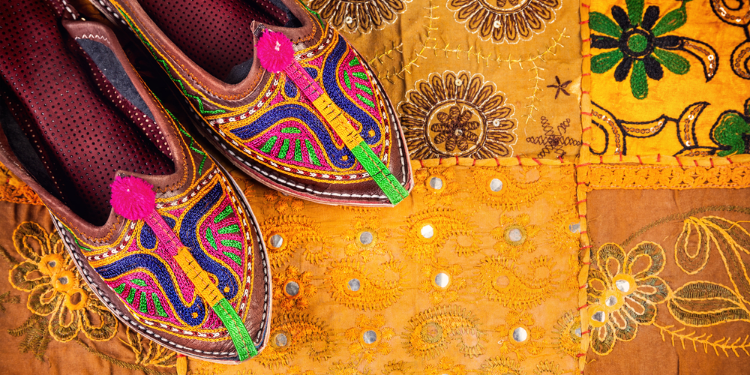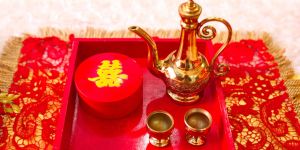
Usually, the clothes we wear tend to be appropriate for the occasion (e.g. a business meeting, a Sunday hike, a night out with friends) we get dressed for, and often express our mood or reveal our personality. But clothing isn’t merely a personal matter; it’s a national too. Traditional ethnic wear, which dates back to a certain period of time in history, represents the culture and identity of a specific ethnic group and is often linked to social and religious status. In most areas of the world, western dress codes have been incorporated, and traditional garments are saved for special events and festivals. However, in some places such as Bhutan, the ethnic wear is still worn in public by citizens.
Sari, India

Sari (or saree) is the traditional garment for the women of India, Sri Lanka, Pakistan, Bangladesh, and Nepal. It's a single piece of unstitched fabric, the length of which can reach up to eight metres, with a decorative end piece. A sari can be draped in as many as 100 ways, depending on the region. Saris are worn by all women in India regardless of their status. The quality varies from cotton versions sold on the streets, to glamorous pieces, taking over international fashion shows. Saris are often passed from one generation to the other at weddings or as gifts for special occasions.
Kilt, Scotland

The kilt is a knee-length, woollen clothing with tartan pattern and pleats at the back, and it is usually worn with long woolly socks. The kilt was the traditional garment of men and boys in the Scottish highlands in the 16th century, but since the 19th century, it has become entire Scotland's ethnic attire. Later, kilts were also adopted by Irish and Welsh nationalists. Kilts are usually worn on formal occasions, such as weddings, at the Highland Games, and at music and dance events.
Kimono, Japan

Kimono is probably the most characteristic symbol of traditional Japanese culture. The word kimono derives from the Japanese words ki and mono, which mean wear thing. In its earliest form, the kimono was worn as an undergarment with hakama (trousers). During the Edo period (1603–1867), the kimono evolved; it became more colourful and was available in different fabrics and styles. However, from the second half of the 19th century, the kimono started losing ground. Today, it's mainly worn for special occasions such as weddings and summer festivals, and most girls have to ask the women of the previous generation to help them put it together.
Non la, Vietnam

Vietnam's most iconic accessory, the conical hat (or non la), is linked to a legend about a goddess who descended from the sky during a time of disastrous torrential rain. She was wearing a giant hat, under which everyone found shelter from the dark clouds. For centuries, the conical hat has been an essential accessory throughout Vietnam, guarding people against the sun and rain, playing the role of a shopping basket, or even serving as a bowl for water. There are over 50 types of non la, and although the materials may differ, generally, the hats are made of palm leaves and bamboo. However, as industrialisation is taking over, dexterous weavers are diminishing, and the hats are instead made in factories.
Gákti, Northern Europe

The Sámi people are indigenous people living in communities in northern Norway, Sweden, Finland, and much less in Russia's Kola peninsula. The traditional costume of the Sámi people is called gákti, kofte, or kolt (depending on the region), and it is a tunic or dress most commonly made of leather, sinews, and wool. The belts, boots, and gloves are traditionally made of reindeer skin and fur, but nowadays other materials such as wool are also widely used. The colours of the gákti are blue, red, yellow, and green, and details such as the buttons or the patterns signify the marital status or the origin of the person.
Maasai bead jewellery, Kenya and Tanzania

The Maasai tribe of Kenya and Tanzania is well known for its bead jewellery, which is made solely by the women but worn by men too. The beadwork one wears highlights the person's age, social, and marital status. Before the arrival of the Europeans, the jewellery was made of clay, wood, bone, and copper, but today the main material used is glass. Each colour stands for something different; red is for bravery and unity, white represents health, blue is for rain and the sky, orange reflects hospitality, and black symbolises the people's struggles.
Kira and gho, Bhutan

The men and women of Bhutan are required to wear their traditional clothing. The men wear a knee-length robe called gho, and the women wear an ankle-length dress called kira. Both garments are tied at the waist and are usually matched with a silk scarf for men and a skillfully decorated jacket for women. Both garments are tied at the waist and are usually matched with a silk scarf for men and a jacket for women. The fabrics for the traditional Bhutanese attire are woven, colourful, have patterns, and luxurious details (depending on the occasion), and wrap the body methodically.



















